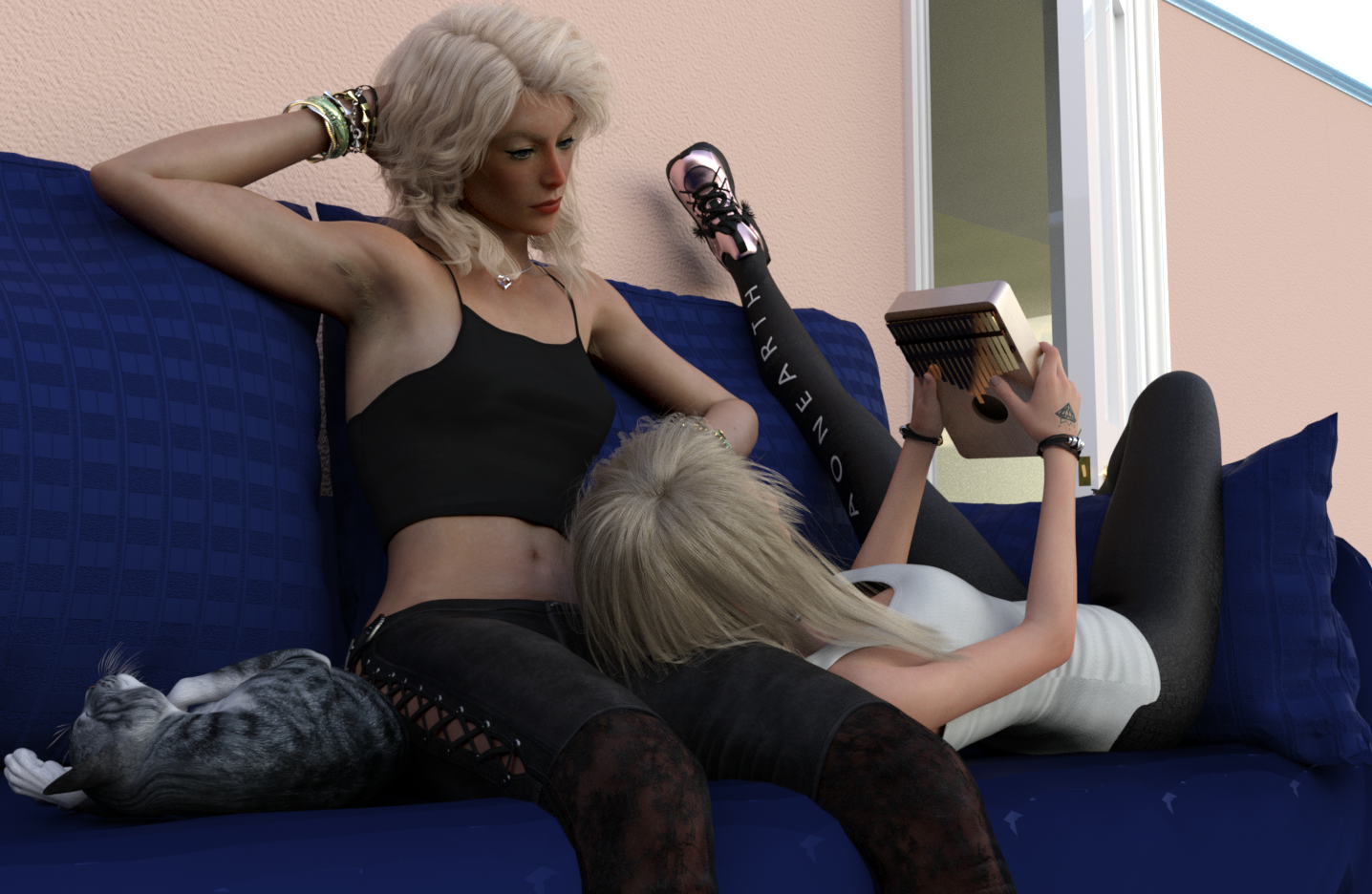Mbira/Kalimba Musical Instrument Prop
 richardandtracy
Posts: 5,669
richardandtracy
Posts: 5,669
I am amazed that I have not been overwhelmed by the clamour for this instrument. An Arraymbira. Yes. There really is a DS prop of an Mbira (or Array Mbira - when made by a particular manufacturer). Yay!
OK, I have to confess I had no idea that an Mbira was even a thing until last week when I was researching Hammer Dulcimers. As you do. As I do, at least.
So what is an Mbira? The best way to explain is to get you to think as simple as you can get. A Jews/Jaws Harp is a metal tongue that is plucked when placed over the player's mouth. The tongue vibrates and the player's mouth is a resonance chamber that amplifies the sound. The length of the tongue of metal determines the fundamental tone of the instrument. The technical term for this class of instrument is a 'Lamellaphone'. The Jews/Jaws Harp is the simplest example of a class that includes music box mechanisms on one side and the Arraymbira on another. In the case of the Arraymbira, there are multiple tongues that may be plucked with the fingers or thumbs and they resonate on the surface of a wooden resonance box. Large ones can have as many tongues as a harp has strings.
This model is a simple 17 tongue one, plucked by the thumbs. Richard Haseltine helped show me how to create the wearable preset used so that you can apply a playing pose (hands, arms and head position only) to a selected G8(F?) character at the same time as loading the Mbira and null node attaching to the right hand. This means the player's arms and hands go into Guo Luk's pose below, but you have control of the torso & legs!
Now that you are desperate to get hold of a model of this utterly magnificent instrument, I have to tell you it's as easy as downloading the zip file below and installing it. The two main library files are found in "<content>/Props/ChestnutP/Interior". There is a simple prop download for when it's not being played and a wearable preset for the one that is being played.
Hope you enjoy it.
Regards,
Richard





Comments
Thank U!
I'm more accustomed to calling that a kalimba.
As I had never heard of a Kalimba until a few seconds ago, I shall bow to your knowledge. I hadn't heard of an Arraymbira until 2 weeks ago, either.. . It seems (according to that reliable source of knowledge, Wikipedia) the name Arraymbira originates in Zimbabwe, and the ethnomusicologist Hugh Tracey created the 'Kalimba' in the 1920's based on the 'Mbira Nyunga Nyunga', an ancient predecessor to the Mbira family of instruments. Well, I never knew that.
. It seems (according to that reliable source of knowledge, Wikipedia) the name Arraymbira originates in Zimbabwe, and the ethnomusicologist Hugh Tracey created the 'Kalimba' in the 1920's based on the 'Mbira Nyunga Nyunga', an ancient predecessor to the Mbira family of instruments. Well, I never knew that.
Regards,
Richard.
I just looked into Array mbiras, and apparently those are much bigger than the one you designed, and are also a specific brand with a design that differs from more traditional mbiras. While yours is definitely an mbira, I don't think it's accurate to call it an ARRAY mbira.
There do seem to be a range of them. Probably as many different ones as there are makers. I think I'll give up on changing the name, as I would probably be doing it all day. On these - dare I say the word? - 'fringe' instruments there seem to be many, many types.
Regards,
Richard.
Call it an mbira if you want, but I would advise dropping the "Array", as that is a brand name.
"Array" is too important name because it's what describes differences from other mbira variations
https://en.wikipedia.org/wiki/Array_mbira
It's like "personal computer". Universal term and not just IBM's brand.
Also https://www.merriam-webster.com/dictionary/array
I can agree on this, if it's the case, though.